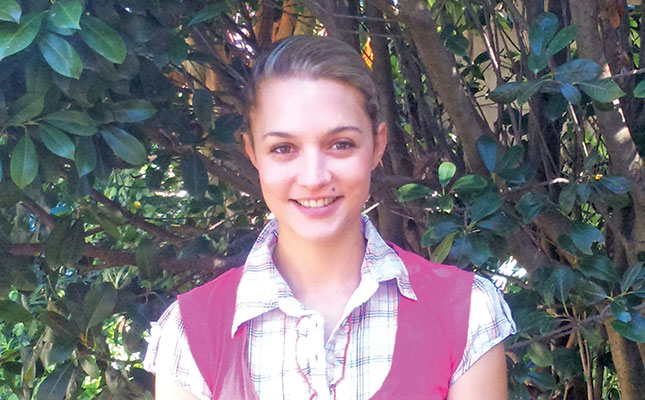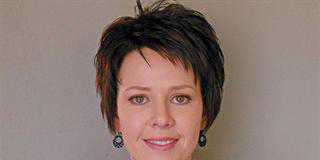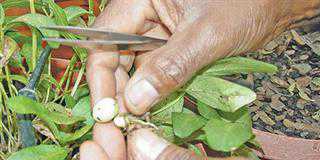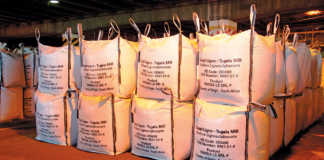
Avocado growers keep a close eye on the fruit set and fruit drop of their orchards from October to February. This is to help them estimate the yield that can be expected during harvesting from March to May.
If avocado flowers are not pollinated, no fruit will develop. To ensure optimal pollination, avocado growers place bee hives in orchards to help increase the number of pollinators available.
Researchers at the University of Pretoria are conducting an ongoing study to determine which cultivar of avocado is the best polliniser for the popular Hass cultivar. They are also investigating the effect of using bees as pollinators in avocado orchards.
The study, which started in the 2015/2016 season, includes in vitro trials, as well as various field trials. The 2017 harvesting data will also be included in the study.
For the in vitro trials, pollen from Ettinger, Fuerte, Bacon, Zutano and Hass cultivars were used to pollinate the Hass pistil.
According to Mart-Marie Nieuwenhuizen, a researcher at the University of Pretoria, the research team focused mainly on pollen tube movement down the style during the in vitro trials. The pistils of the
The pistils of the pollinised flowers were studied under a fluorescent microscope and evaluations were made with regard to the number of pollen grains on the stigma, the number of pollen tubes moving down the style, and the number of pollen tubes that reached the ovary and entered the ovule.
During both seasons, the Zutano flowers outperfomed all the other cultivars in terms of pollen availability.
Pollination with Zutano pollen resulted in the highest number of pollen tubes moving down the Hass style, which indicated that the Hass pistil was more receptive to Zutano pollen. Zutano pollen was also the most successful in reaching the ovary.
Both Bacon and Zutano pollen were slightly more effective with regard to the number of pollen tubes that entered the ovule.
Nieuwenhuizen said that based on these results, both Zutano and Bacon could be considered as a polliniser for Hass, while Fuerte and Ettinger pollen performed just as well as Hass pollen on the Hass pistil.
“When choosing a cultivar to use as a polliniser, it is important to ensure that its flowering time coincides with that of Hass,” she said.
“When flowering times differ, the pollination rate, as well as fruit set, will decline.”
Field trials
Field trials were conducted in the ZZ2 orchards near Tzaneen. Eight trees were placed under netting. Four of these contained Hass and Zutano trees, as well as bees, and the remaining four contained only Hass trees and bees.
Control groups were set up in two open air trial blocks, with eight trees in each block. Fruit set counts were taken in October 2016 and December 2016 and will again be taken between March and May this year.
The results demonstrated that a Hass and Zutano combination produced a better initial fruit set than Hass on its own. It also confirmed that using bees increased fruit set in Hass.
After the second count, however, fruit drop was so significant that there was not a substantial difference in the amount of fruit on Hass trees with Zutano as a polliniser and Hass trees without a polliniser.
“Instead of determining which pollinisers could be used to increase fruit set, it may be more important to look at the type of polliniser that can be incorporated to reduce fruit abscission on Hass trees,” she said.
“When the Hass pistil is more receptive to a certain polliniser’s pollen, more germination will occur and more pollen tubes will move down the style to induce increased competition between the pollen tubes.”
When there is a higher level of competition between pollen tubes, only the strongest pollen tube will reach the ovary and a stronger fruit could develop after fertilisation.
A field trial was also conducted with Hass and Fuerte trees to determine fruit set at different distances. Rows of Hass trees were chosen at distances of 7m, 20m, 35m and 49m from Fuerte (polliniser) trees.
The fruit set on the Hass trees was evaluated in October and again in December.
In October, fruit set counts showed that Hass trees closer to the Fuerte trees achieved a higher level of fruit set. In December, however, fruit drop was again significant, and there was no difference in the amount of fruit on the Hass trees, regardless of the distance from the Fuerte trees.
“The overall low fruit set indicates that Fuerte may not be the best polliniser for Hass, but further investigation is needed to confirm this,” said Nieuwenhuizen.
Email Mart-Marie Nieuwenhuizen at [email protected].













